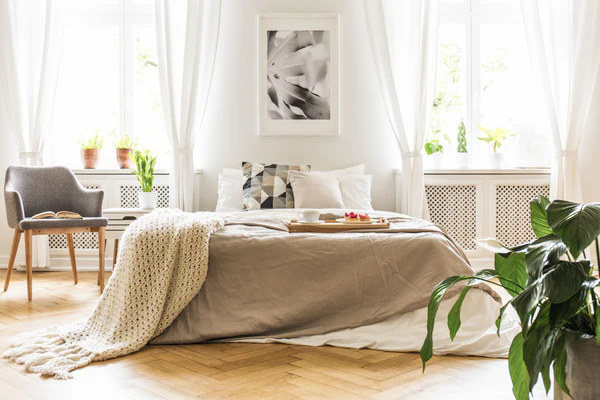Natural light can transform a living space, making it more open, inviting, and energizing. Maximizing the sunlight in your home has aesthetic appeal and contributes to improved mood and energy efficiency. The position of windows plays a crucial role in determining the amount of natural light that enters a room.
When designing or renovating your space, consider the orientation of your home and the path of the sun throughout the day. South-facing windows typically receive the most consistent light, while north-facing windows provide a cooler, more diffused illumination. East-facing windows offer bright morning light, and west-facing windows provide warm afternoon sun.
- Optimize window treatments
While privacy is important, heavy curtains or blinds can significantly reduce the amount of natural light entering your space. Opt for sheer or lightweight curtains that allow light to filter through while still providing some privacy. Alternatively, consider using top-down, bottom-up shades to adjust the light levels while maintaining privacy.
- Use reflective surfaces
Reflective surfaces in your interior design help bounce light around the room, making it appear brighter and more spacious. Consider using mirrors, glossy tiles, or metallic accents to amplify the natural light. Positioning a large mirror opposite a window can create the illusion of an additional light source and make the room feel more open.

- Choose light colours for walls and ceilings
Light-coloured walls and ceilings reflect more light than darker surfaces, helping to distribute natural light throughout the space. Opt for whites, creams, or pale pastels to create a bright, airy atmosphere. This approach maximizes natural light and makes rooms more extensive and open.
- Keep windows clean and unobstructed
Regularly cleaning your windows has a surprising impact on the amount of light that enters your home. Dust, grime, and streaks significantly reduce light transmission. Additionally, ensure that furniture, plants, or other objects are not blocking windows, as this limits the amount of natural light reaching your living areas.
- Consider skylights or solar tubes
If your home’s architecture allows, installing skylights or solar tubes is an excellent way to introduce natural light into darker areas. Skylights are particularly effective in rooms with limited wall space for windows, such as attics or interior bathrooms. Solar tubes and sun tunnels bring natural light into spaces where traditional skylights aren’t feasible. Glass tables, light-coloured upholstery, and furniture with metallic accents all contribute to a brighter, more light-filled space. This approach uses natural lighting but creates a cohesive and airy interior design.
- Trim outdoor vegetation
While trees and shrubs provide privacy and shade, they also block significant natural light from entering your home. Regularly trim branches and foliage near windows to ensure they’re not obstructing sunlight. Consider replacing dense, light-blocking plants with more transparent options that allow filtered light to pass through.
Incorporating glass doors or partitions within your home can help distribute natural light between rooms. French doors, sliding glass doors, or even interior windows allow light to flow freely through your living space, creating a more open and bright environment.
Categories
Recent Posts
Advertisement


